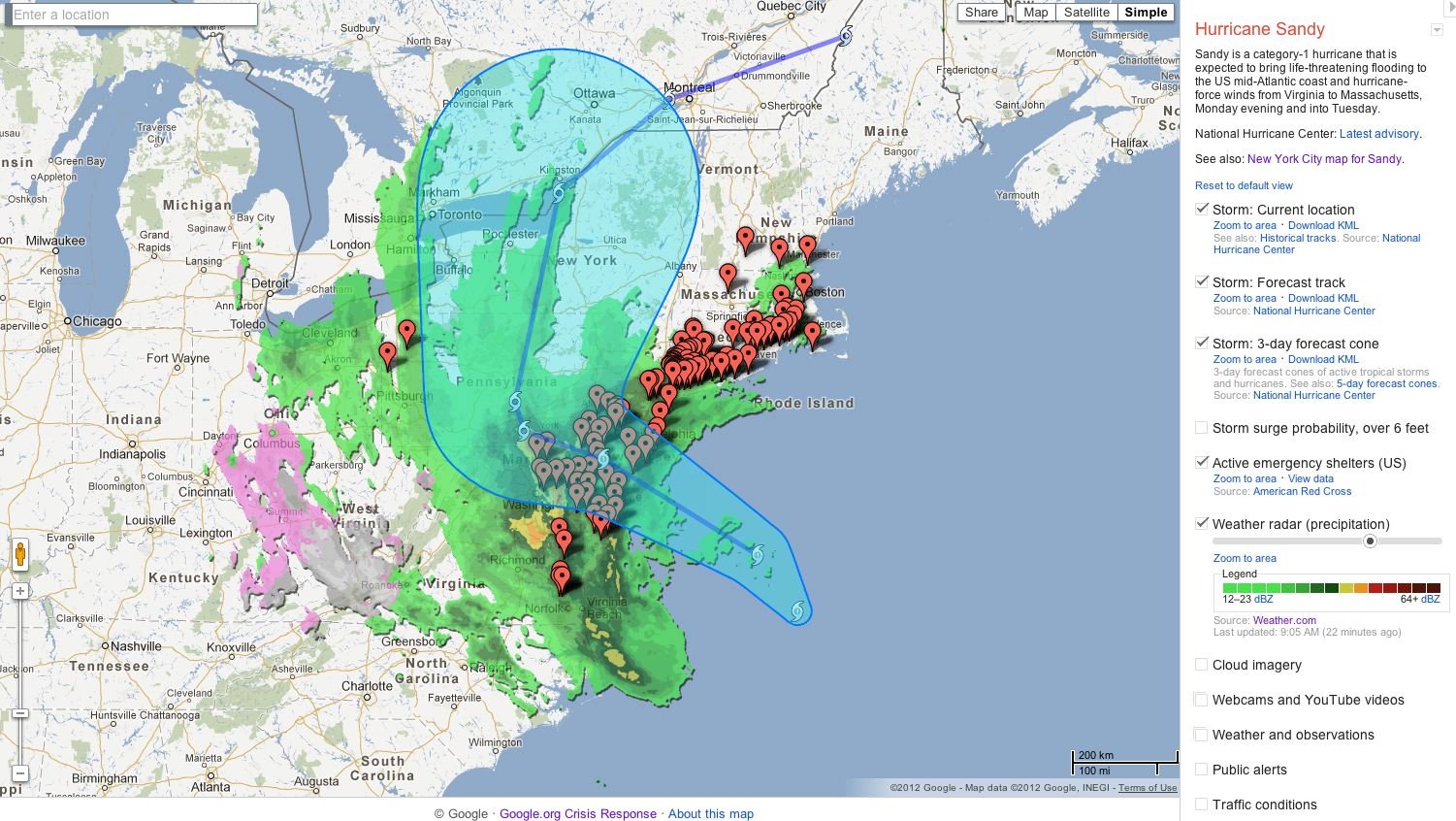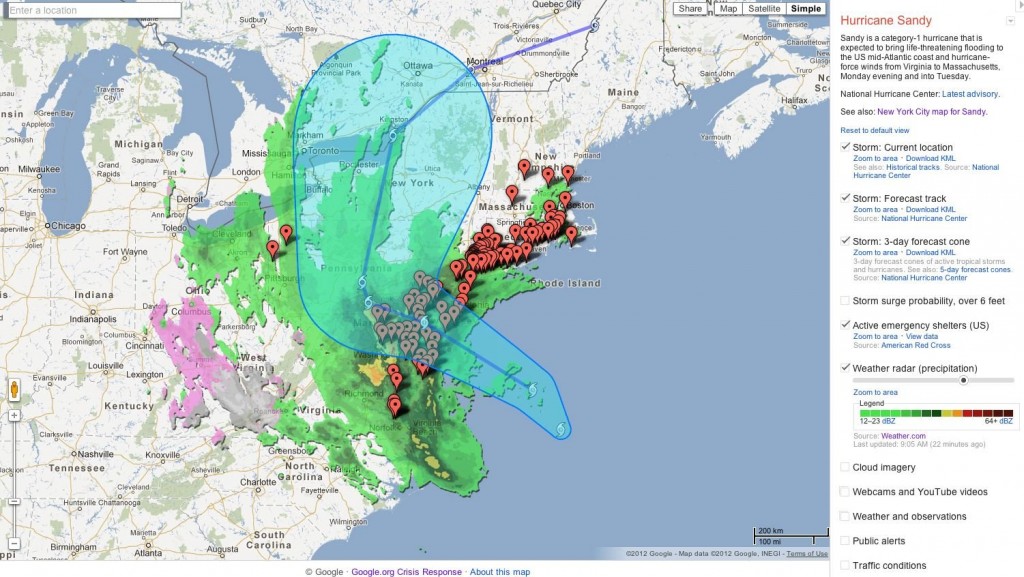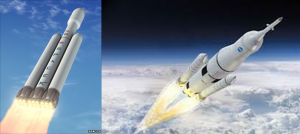This week’s five stories look at:
- Singapore First to Open Vertical Urban Farm
- Bananas May be the New Potatoes of a Warming World
- Drop in Arctic Snow and Implications for the Permafrost
- The Internet Changes How We Respond in a Crisis
- News About New Heavy Launch Rockets from the Public and Private Sector
Singapore First to Open Vertical Urban Farm
Sky Greens has opened the first 3.65-hectare (9 acre) farm on the island of Singapore providing fresh vegetables to local consumers. The farm consists of 120 vertical towers with plans to expand to 300 by next year. Today Singapore can only produce about 7% of its total food requirements because of scarce agricultural land on the island. As a result much of the food consumed by Singaporeans comes from neighbouring Malaysia. Sky Greens uses a system it calls A-Go-Gro. Each vertical system is 9 meters (approximately 30 feet) in height. Currently the farm is growing Chinese Cabbage, Spinach, Lettuce, Xiao Bai Cai, Bayam, Kang Kong, Cai Xin , Gai Lan and Nai Bai. Sky Greens hopes to increase Singapore production by almost 50% to allow the island nation to grow 10% of its total food requirement.
Bananas May be the New Potatoes of a Warming World
For many in the Developing World potatoes may not be an accessible food staple as temperatures rise according to United Nations experts looking at the future of food security. In a report on food security and climate change, the scientists predicted a decline in corn, rice, wheat and potato production. Already many of these crops are stressed in warmer climates so growing them will become even more difficult as temperatures rise. Instead bananas, cassava and cowpeas (also known as black0eyed peas) may become the staple food source for much of the planet. Bananas will migrate to more northerly climes where they will be a good substitute for potatoes. Wheat will disappear from semi-tropical and tropical farms. Rice and soybeans which have enjoyed rapid growth in places like Sub-Saharan Africa may disappear as well to be replaced by cassava (currently grown in many African countries) and cowpeas (seen below).
Drop in Arctic Snow and Implications for the Permafrost
In June this year according to a study appearing in Geophysical Research Letters, the snow cover in the Arctic continued to drop. Since 1980 that snow blanket that remains after spring melt has fallen from 9 million square kilometers to 3 million (from 3.5 million to 1.15 million square miles). In the polar region of the Northern Hemisphere the drop in snow cover has exceeded the drop in sea ice over the same period. What does this mean? Snow radiates sunlight to cool the atmosphere above it. The lack of snow means sunlight energy is absorbed into the ground and consequently the air above gets warmer. It also means that permafrost gets warmed. Warming permafrost (seen crumbling below) means the release of greenhouse gases (mainly methane) from the previously frozen tundra.
The Internet Changes How We Respond in a Crisis
Hurricane Sandy gave Google.org, the non-profit arm of Google, an opportunity to test a new service it calls public alerts. Using Google Maps to pinpoint crises by location, people looking for information were able to receive emergency alerts, find evacuation routes, and shelters to ride out the hurricane. Anyone with an Android phone could receive these alerts in response to searches on Google.com or Google Maps. Google provided a New York City map, webcams and detailed information from NYC Open Data, the city’s web site for software developers. Information from the Red Cross, the National Hurricane Center, NOAA, weather.gov, Storyful and the Naval Research Laboratory appeared in near real-time on Google Maps.
News About New Heavy Launch Rockets from the Public and Private Sector
In the last week news appeared about NASA’s SLS (Space Launch System). The United States is creeping closer to being able to launch large payloads into Earth orbit and beyond in the post-Shuttle era. There are two candidates in the running, one privately operated for profit and the other government sponsored. SpaceX is building the Falcon Heavy, capable of putting 60 ton payloads into orbit). The Falcon Heavy should be ready to fly in late 2013 or early 2014. The SLS has even larger payload capacity capable of placing 77 tons into low-Earth orbit with first launch planned for 2017. The SLS plans an upper stage to increase payload delivery capability to 143 tons by 2022. Unique to the SLS will be a nose-cone fairing with a diameter of 10 meters (30+ feet) creating payload volumes of 1,100 cubic meters (38,846 cubic feet). With large payload volume the united States will be able to put spacecraft capable of inter-planetary travel into orbit.
A Postscript
Once again I thank the thousands of you who continue to drop by each month. It encourages me to write more. If you have a topic that fits within the themes of this blog, and a flare for good writing, then let me know. Guest articles are welcome!
– Len Rosen





















NASA has a long history of mediocre performance, perverse delays in data distribution, and huge cost overruns. In shamming contrast, SpaceX has a pervasive corporate culture of economical excellence. Cut NASA’s boost rocket budget and give the money to SpaceX. The taxpayer will likely get a-ten fold return on the diverted funds investment, or at least not get as badly screwed. SLS is just another hugely expensive NASA pie-in-the-sky boondoggle that would prove ancillary to even more hugely expensive boondoggles.
One of the few NASA projects that seem significantly significant (and probably worthy of public support, though of no prompt benefit to Earth’s economy) is the James Webb Space Telescope. Read about NASA’s screwing of the taxpayer at http://en.wikipedia.org/wiki/James_Webb_Space_Telescope
“Because the runaway budget diverted funding from other research, the science journal Nature described the James Webb as “the telescope that ate astronomy”.”
Give NASA the SLS and notice a decade latter as “Nature” will likely describe it as the “Rocket that ate the whole world.”
My biggest concern about SpaceX is how wed it currently is to NASA. It is a far leaner and better constructed space company than NASA but so much of its agenda is tied to the latter’s objectives. Elon Musk has a vision to go to Mars well before NASA, but I wish his vision was focused on developing robotic technology to go with the muscle he is putting into his rocketry.
NASA, if it finds itself competing more and more with private enterprise, may finally stop being the boondoggle. The SLS could easily be a joint venture in which NASA puts out a competition for solutions and assigns money to those that come up with a credible specification. It has started going down this path but not with SLS or would it appear, Orion.
The James Webb Space Telescope should not be a victim of NASA’s inability to find budget for such an important tool for scientific discovery. Let’s hope it doesn’t become one.
Len Says: “The James Webb Space Telescope should not be a victim of NASA’s inability to find budget for such an important tool for scientific discovery. Let’s hope it doesn’t become one.”
Well, last year Congress told NASA $8-billion is all you can ever get for the JWST. $4-billion of that is already sunk. The whole world of scientists and philosophers (even including confirmed NASA/man-in-space scoffers and skeptics such as myself) eagerly awaits the JWST results. The program should be worth as much to astrophysical science and cosmological philosophy as at least ten Hubbles. If NASA burns through the next $4-billion allocation and crawls back to Congress saying, “Gee fellas, with inflation and all, and unanticipated new technical discoveries bearing on final design, we will need another $3-billion to get JWST up and running,” will Congress sternly answer with, “Just write off that first $8-billion, we already warned you, there is just no more money for the JWST.” I’m guessing NASA and Congress are caught up and married together in the prior investment trap, and regardless of scale of cost overruns there is no way the program will cancel. But the public will wind up paying over $16-billion before the first dim pictures of creation come in.
Actually, total program costs for the original 8-meter mirror proposal would have only run a couple of billion more, and NASA would have had a much better argument for a SLS system. Some astronomical experts have suggested the original proposal 8-meter version could have directly imaged planets orbiting nearby stars. One of the main reasons JWST so expensive is because it’s a one-of program. I say if we need one, we need at least six; the next five after the first one should come in at only 10% of the costs of the first one. It’s pathetically absurd that the world’s leading astrophysicists will have to book every ten-minutes of scope-time 24-months in advance.
Hubble Space Telescope is in low Earth Orbit. Orbital decay will probably kill it around 2025, and no latter than 2030. At L-2 orbit the JWST will not suffer any orbital decay, and in principle could be designed to serve Earth for a century or more. If we consider costs amortized over 100-years, the annual costs for six JWSTs would seem reasonable. Robotic development may be near the point of where the entire JWST concept should be re-examined with a view toward AI robotic person space assembly and observatory operation, maintenance, and upgrades as needed, on L-2 orbit. If a robot person is going to assemble it at L-2 orbit, it can be designed to have a much larger “mirror,” say in the 30-meter range, which would gather 25-times as many photons as the present design.
The concept of having a smart robot observatory attendant/operator/mechanic seems a rational prerequisite to launching $15-billion worth of astronomical apparatus to the L-2 point. Think of our sad experience with Hubble. The whole program expenditure would have been completely wasted had not the several expensive and hazardous manned shuttle missions delivered mechanics in spacesuits to replace Hubble’s lenses, gyros, batteries, etc. All together Hubble costs exceeded $10-billion. If something goes wrong with JWST at L-2, an on-station AI robot crew could receive and install replacement parts, which would cost a small fraction of sending human mechanics in spacesuits. While I’m eager to get results from JWST, I’m happy to wait until NASA gets its space observatory robot persons perfected.